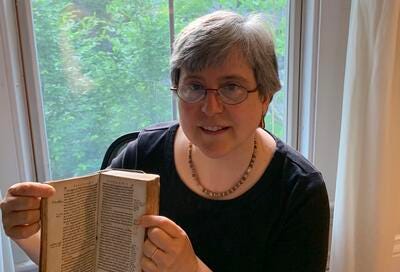Welcome to the first of our “best idea” videos, from Ann Blair (Harvard).
On Note-taking
"The note is the origin of the lecture and the end toward which the lecture tends. The lecture's fore and aft - the note. The lecture's tipping point, the notebook combines the energy of containment with the velocity of scatter. This is why its vitality cannot be underestimated as the lecture's wellspring and repository. It's the set of marks that prove you have found a way to remain inspired, against all odds, and it can't be reproduced; if it's stolen or lost, forgotten or misplaced, it cannot be replaced. Our notes are keys that await a hand to find the chord in them, the strangest sound inside an even stranger afternoon. They're a series of strategies, a record of arrangements, as beguiling as they are familiar. They're a pack of strays that cannot be corralled for all their mewling." (Mary Cappello, Lecture)
"Note 227. It happened again. I thought of something and then I picked up the phone to call my mother or Stephen because I wanted to ask them if they'd read something or tell them about that something and laugh, but they are both dead. After twenty-four years, after eight years, how is it still possible that I reach for the phone to call you? … Note 242. I write these ordinary things to detail the everyday sonic and haptic vocabularies of living life under these brutal regimes. … Note 248. This is a love letter to my mother." (Christina Sharpe, Ordinary Notes)
There are a lot of reasons why we take notes. Some of us make notes as a practice of living, as an aspect of our craft. It's how we think. It's how we make things. It's how we reach out into time, or root ourselves there. It’s how we love.
And some of us are interested in the practice of note-taking itself. We geek out over Niklas Luhmann's Zettelkasten system. We carry notecards and pens in our pockets. We keep track of readings and lectures in programs like Roam Research. Our desks are covered in post-its. We are decomposers, fragmenters, re-arrangers, connectors.
In this seed, Ann Blair reflects on the act of note-taking as a practice of attention. You will find, here, thoughts on the activities that comprise note-taking as activity: selecting, summarizing, paraphrasing, cutting-and-pasting, storing, connecting, going-back-to, slowing-down. Note-taking has its hazards as well as its affordances, and you will find some tricks to try to mitigate those hazards. You will find thoughts on the relationship between the burial and the discovery of things, on the creative practice of making new ways of being next-to.
You might want to take notes.
Biography
Blair studies the cultural and intellectual history of early modern Europe (16th-17th centuries), with an emphasis on France. Her interests include the history of the book and of reading, the history of the disciplines and of scholarship, and the history of interactions between science and religion.
Her publications include The Theater of Nature: Jean Bodin and Renaissance Science (Princeton UP, 1997), Too Much To Know: managing scholarly information before the modern age (Yale UP, 2010), and L’Entour du texte: la publication du livre savant à la Renaissance (2021). She has co-edited, with Jennifer Milligan, Toward a Cultural History of Archives, a special issue of Archival Science (2007); with Richard Yeo, Note-Taking in Early Modern Europe, a special issue of Intellectual History Review (2010); with Kaspar von Greyerz, Physico-theology: Religion and science in Europe 1650-1750 (2020); with Nicholas Popper, New Horizons for Early Modern European Scholarship (2021); with Paul Duguid, Anja-Silvia Goeing, and Anthony Grafton, Information: A Historical Companion (2021).




